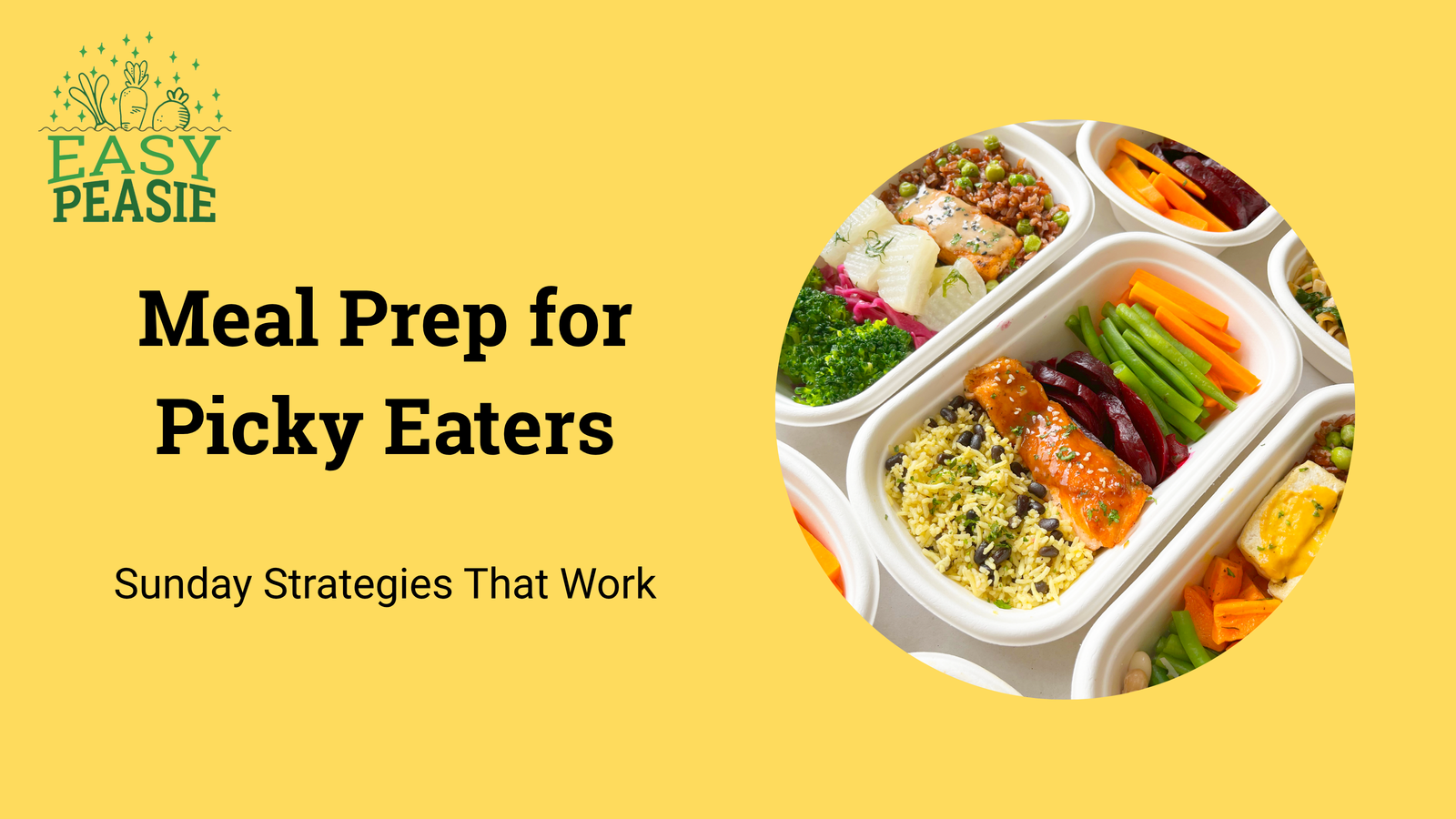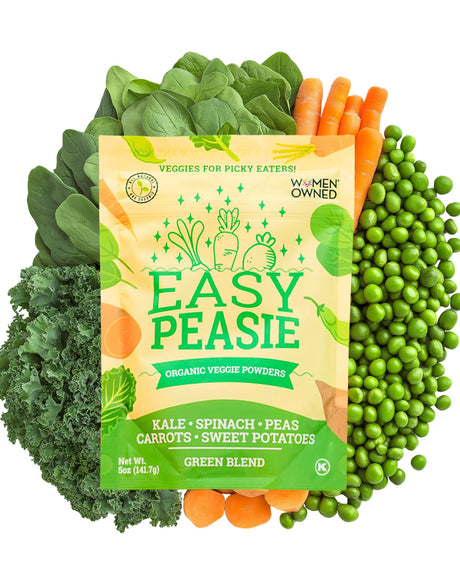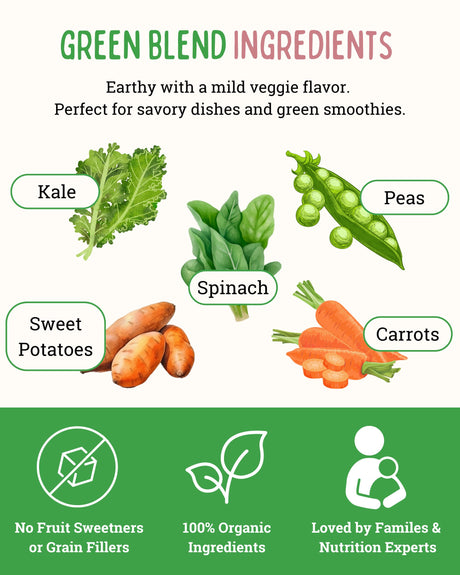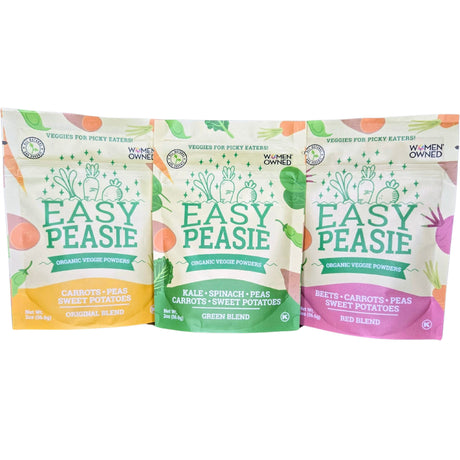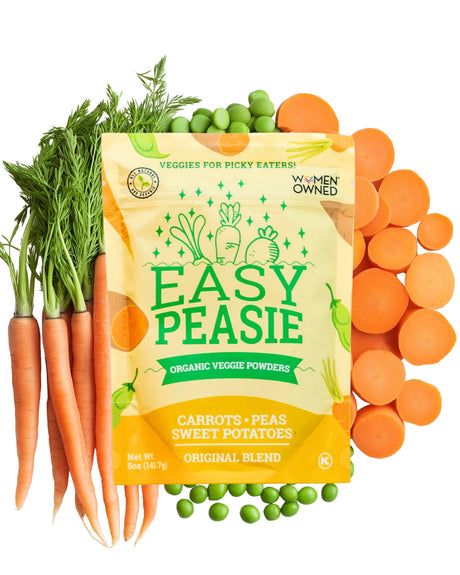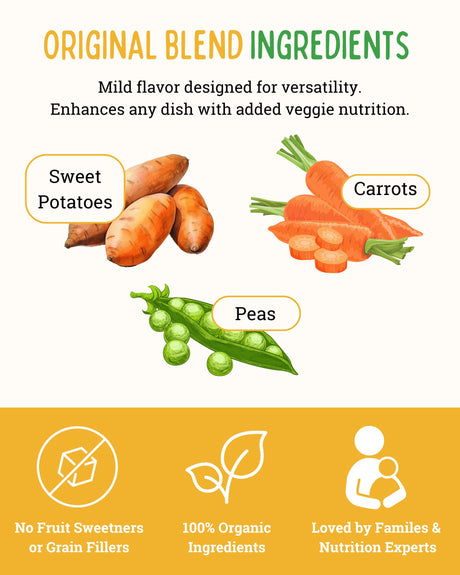Sunday evening rolls around and you're staring at the upcoming week with dread. You know there will be at least three mealtime battles, two instances of making separate meals for different family members, and countless moments of wondering what on earth you can feed a child who seems to survive on air and the occasional cracker.
If you're exhausted by the daily scramble of figuring out what to feed your picky eater, you're not alone. The constant mental load of meal planning for selective eaters can feel overwhelming, especially when you're trying to balance nutrition, family harmony, and your own sanity.
Here's what thousands of families have discovered: strategic Sunday meal prep specifically designed for picky eaters can transform your entire week. The key isn't trying to force variety or prep elaborate meals your child won't eat – it's working with their preferences while setting yourself up for success. When you prep smart, you spend less time stressed and more time enjoying meals with your family.
Understanding Meal Prep for Picky Eaters
Why Traditional Meal Prep Fails Picky Eating Families
Most meal prep advice assumes everyone in the family will eat the same foods. When you have a picky eater, preparing a week's worth of meals they'll refuse creates more stress, not less.
Traditional meal prep often focuses on variety and trying new recipes – exactly what doesn't work for children with limited food acceptance. Instead of reducing your workload, you end up with containers full of rejected food and still need to make something your child will actually eat.
Common Meal Prep Mistakes with Picky Eaters:
- Preparing too many new or unfamiliar foods
- Making large batches of meals only one family member likes
- Focusing on "healthy" options that get consistently refused
- Not having backup options when prep meals are rejected
- Trying to prep entire meals instead of flexible components
The Picky Eater Meal Prep Mindset
Successful meal prep for picky eaters requires a completely different approach. Instead of preparing complete meals, you're creating a foundation of accepted foods and flexible components that can be mixed and matched throughout the week.
This approach acknowledges that feeding picky eaters is about consistency, flexibility, and reducing daily decision fatigue – both yours and your child's.
The New Approach:
- Prep components, not complete meals
- Focus on foods you know your child will eat
- Create flexibility rather than rigid meal plans
- Build in nutrition where it's accepted
- Prepare for backup situations
The Psychology of Food Security
Picky eaters often feel anxious about food, and this anxiety increases when they can't predict what will be served. Having familiar, accepted foods readily available creates a sense of food security that can actually make children more willing to try new things.
When children know there's always something they can eat, the pressure around meals decreases for everyone. This calmer atmosphere often leads to better food exploration over time.
Sunday Prep Strategies That Actually Work
Strategy 1: The Accepted Foods Foundation
Start your Sunday prep by preparing larger quantities of foods you know your child already eats. This creates the foundation for the entire week and ensures you always have safe options available.
Prep These Staples:
- Cook a large batch of preferred proteins (chicken nuggets, plain chicken, etc.)
- Prepare favorite starches (plain pasta, rice, toast points)
- Wash and cut accepted fruits
- Portion out preferred snacks
- Make larger amounts of any accepted sauces or dips
One parent shared: "I make a huge batch of plain pasta every Sunday. My 4-year-old eats pasta almost daily, so I just reheat portions and add different things depending on what he'll accept that day."
Strategy 2: The Enhancement Station
Once you have accepted foods prepped, create easy ways to add nutrition without changing the basic foods your child likes. This might include mild vegetable powders, pureed vegetables that mix into sauces, or simple additions that don't alter familiar flavors.
Enhancement Options:
- Vegetable powders that can be mixed into accepted foods
- Pureed vegetables for stirring into pasta sauce or soups
- Mild seasonings that add nutrition without strong flavors
- Healthy fats like olive oil or avocado oil for cooking
- Simple additions like shredded cheese or butter that add calories and some nutrients
Easy Peasie Vegetable Powder Blends work particularly well for this strategy. As one customer noted: "I put this in everything! Such a great way to get extra veggies!" Another shared: "My kids don't seem to notice and enjoy their food without noticing any taste change."
Strategy 3: The Flexibility System
Instead of preparing complete meals, create components that can be combined in different ways throughout the week. This gives you options when preferences shift or when your child rejects something they usually eat.
Component Categories:
- Safe Proteins: Prepare 2-3 accepted protein options
- Reliable Carbs: Have multiple carbohydrate options ready
- Acceptable Fruits/Vegetables: Prep whatever produce your child will eat
- Familiar Sauces: Make or portion sauces your child likes
- Backup Snacks: Always have preferred snacks readily available
Strategy 4: The Gradual Expansion Method
Use Sunday prep to set up tiny experiments for the week ahead. This might mean preparing small portions of foods that are similar to accepted favorites, or creating gentle exposure opportunities.
Gradual Expansion Ideas:
- Prepare whole grain versions alongside white versions of accepted foods
- Make different shapes of the same accepted food
- Prep foods in your child's preferred colors but different varieties
- Create tiny portions of "bridge" foods that connect to current preferences
- Set up sensory exploration opportunities with no eating pressure
The 90-Minute Sunday Prep Plan
Phase 1: Assessment and Planning (15 minutes)
Before you start cooking, spend time reviewing what worked and didn't work the previous week. Check your pantry for accepted foods that need restocking and think about the week ahead.
Quick Assessment:
- What accepted foods are you running low on?
- Which meals caused stress last week?
- Are there any special circumstances this week (busy nights, activities, etc.)?
- What backup options do you need to have ready?
Weekly Planning Questions:
- Which 3-4 accepted foods should you prep in larger quantities?
- What enhancement opportunities exist this week?
- Where can you build in flexibility?
- What gradual expansion experiments feel realistic?
Phase 2: Foundation Prep (45 minutes)
Focus on preparing larger quantities of your child's most accepted foods. This is your insurance policy for the week ahead.
Foundation Tasks:
- Cook preferred proteins in larger batches
- Prepare accepted starches (pasta, rice, bread items)
- Wash and prep accepted fruits and vegetables
- Portion out preferred snacks
- Prepare or organize accepted sauces and dips
Efficient Techniques:
- Use multiple burners or appliances simultaneously
- Prepare similar foods together (all proteins, then all starches)
- Focus on quantity over variety
- Keep preparations simple and familiar
Phase 3: Enhancement and Flexibility Prep (20 minutes)
Set up ways to add nutrition and create meal flexibility throughout the week.
Enhancement Tasks:
- Portion vegetable powders or purees for easy addition
- Prepare simple mix-ins that don't change familiar flavors
- Set up healthy fats and seasonings for easy access
- Organize ingredients for quick meal modifications
Flexibility Tasks:
- Create grab-and-go combinations
- Prepare backup meal components
- Set up easy assembly options
- Organize ingredients for quick meal variations
Phase 4: Storage and Organization (10 minutes)
Proper storage ensures your prep work pays off throughout the week.
Storage Strategies:
- Use clear containers so your child can see familiar foods
- Label containers with both contents and dates
- Store components separately for maximum flexibility
- Keep backup snacks easily accessible
- Organize refrigerator for quick meal assembly
Addressing Common Challenges
When Your Child Rejects Prepped Food
Even accepted foods sometimes get rejected, and this can feel devastating when you've spent time prepping them. Having strategies for these situations prevents complete mealtime meltdown.
Rejection Strategies:
- Always have backup options from your foundation prep
- Keep simple alternatives readily available
- Don't take rejection personally – preferences fluctuate
- Offer choices between prepped options rather than yes/no questions
- Remember that seeing rejected food still counts as exposure
Managing Multiple Picky Eaters
Families with multiple selective eaters face additional challenges, but the component-based approach works even better in these situations.
Multiple Child Strategies:
- Find overlapping accepted foods and prep those in larger quantities
- Create individual component boxes for each child
- Prep shared elements (plain proteins, basic starches) in bulk
- Use different colors or containers to help children identify their preferred options
- Focus on foods that work for the majority of family members
Balancing Prep Time with Family Time
Sunday prep shouldn't take over your entire weekend. The goal is to save time and stress during the week, not create Sunday overwhelm.
Time Management Tips:
- Start small and build your prep routine gradually
- Include family members who can help with age-appropriate tasks
- Focus on high-impact prep that saves the most weekday stress
- Remember that some prep is better than no prep
- Adjust your prep based on the week ahead
Working with Extremely Limited Diets
For children with very restricted food acceptance, meal prep looks different but is equally valuable.
Limited Diet Approaches:
- Prep larger quantities of the few accepted foods
- Focus on texture and temperature preferences in storage
- Create multiple ways to serve the same basic foods
- Prep nutrition additions that work with accepted foods
- Always have emergency options readily available
As one parent of a child with autism shared: "My daughter is autistic and a VERY picky eater. If she could live off crackers, she would. She never notices when I put these veggies in her food and neither do I! I put it on her snacks and meals."
Building Your Family's Custom System
Week One: Start Simple
Don't try to implement every strategy at once. Focus on prepping larger quantities of foods you already know work for your family.
Simple Start Options:
- Prep one preferred protein in a larger batch
- Cook extra of one accepted starch
- Organize preferred snacks for easy access
- Set up one simple nutrition enhancement
Week Two: Add Flexibility
Once basic prep feels manageable, add elements that create more meal options throughout the week.
Flexibility Additions:
- Prep components that can be combined differently
- Create simple sauce or dip options
- Set up grab-and-go combinations
- Add one new prep element that saves weekday time
Week Three: Customize and Refine
Adjust your prep routine based on what's working and what isn't. Every family's system will look different.
Customization Questions:
- Which prep tasks save you the most weekday stress?
- What elements of your routine need adjustment?
- Where can you add small expansions or enhancements?
- What backup systems do you need?
Creating Long-Term Success
The goal isn't perfect meal prep – it's creating systems that make your week easier and more peaceful.
Success Indicators:
- Fewer daily decisions about what to feed your child
- Reduced stress during weekday meals
- Less food waste from rejected meals
- More family mealtime enjoyment
- Consistent nutrition even when food acceptance fluctuates
Practical Storage and Safety
Food Safety for Picky Eater Prep
When prepping foods for selective eaters, food safety becomes even more important because you're often dealing with limited options.
Safety Guidelines:
- Cool prepped foods quickly and store properly
- Label everything with contents and prep date
- Use prepared foods within 3-4 days
- Keep backup options that don't require refrigeration
- Store components separately to prevent cross-contamination
Storage Solutions That Work
The right storage makes the difference between prep that helps and prep that creates more work.
Effective Storage:
- Clear containers that let children see familiar foods
- Appropriate portion sizes for easy serving
- Stackable containers that maximize refrigerator space
- Separate storage for different food categories
- Easy-to-open containers for independent access
Advanced Strategies for Established Preppers
The Theme Week Approach
Once basic prep is established, some families find success with loose weekly themes that provide structure without rigidity.
Theme Examples:
- Comfort Food Week (focus on familiar favorites)
- Color Week (foods in preferred colors)
- Shape Week (different shapes of accepted foods)
- Mix-and-Match Week (emphasis on flexible combinations)
Seasonal Adjustments
Your prep routine may need adjustment based on seasons, schedules, and changing family needs.
Summer prep might focus on cooler foods and hydration, while winter prep could emphasize warming comfort foods. School year prep needs to account for packed lunches, and holiday prep might require more backup options.
Involving Children in Prep
Age-appropriate involvement can help children feel more comfortable with prepped foods and reduce mealtime anxiety.
Let children choose which accepted foods to prep, have them help with simple washing or organizing tasks, and include them in deciding meal combinations from prepped components.
Moving Forward with Confidence
Measuring Success Differently
Success with picky eater meal prep isn't measured by variety or nutrition perfection – it's measured by reduced stress, improved family dynamics, and sustainable systems.
Real Success Looks Like:
- Easier weekday meal decisions
- Less daily food stress
- More enjoyable family mealtimes
- Consistent availability of accepted foods
- Reduced food waste and grocery spending
Adjusting Expectations
Meal prep for picky eaters requires different expectations than traditional meal prep. The goal is creating systems that work with your child's needs rather than fighting against them.
Realistic Expectations:
- Progress may be slow and non-linear
- Some weeks will work better than others
- Flexibility matters more than perfection
- Small improvements are meaningful victories
- Systems need regular adjustment as children grow and change
Building Sustainable Habits
The most effective meal prep routines are ones you can maintain consistently, even during busy or stressful periods.
Start smaller than you think you need to, focus on prep tasks that save the most weekday stress, and create systems that work even when life gets chaotic. Remember that some prep is always better than no prep.
Meal prep for picky eaters isn't about forcing variety or sneaking vegetables into every meal – it's about creating predictable, low-stress systems that ensure your child always has something they can eat while preserving your sanity. When you prep with your child's actual preferences in mind rather than fighting against them, you create the foundation for more peaceful meals and gradual food acceptance over time.
The families who find the most success with this approach focus on consistency, flexibility, and working with their child's needs rather than against them. Sunday prep becomes less about perfect nutrition and more about creating the conditions where family meals can be enjoyable for everyone involved.
Disclaimer: This article is for educational purposes only and does not constitute medical advice. Always consult with your child's healthcare provider for concerns about nutrition, growth, or development.

